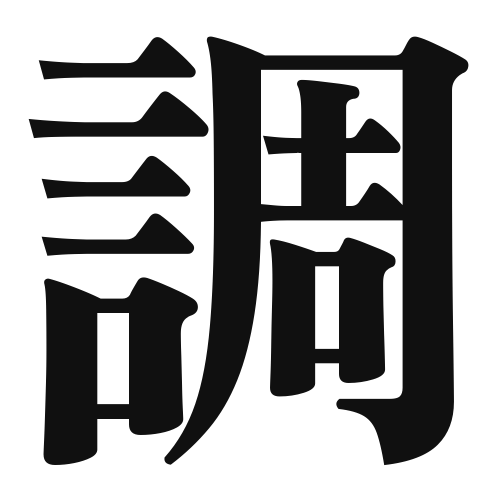1. Overview of Meaning
The kanji “調” (chō) primarily means “to tune,” “to investigate,” or “to adjust.” It is often associated with the idea of making something harmonious or balanced, whether in music, situations, or relationships.
2. Formation and Radical
Formation of the Kanji: The kanji “調” is a compound character (会意文字) that combines elements to convey its meaning. It consists of the radical “言” (word) and “調” (to investigate), suggesting the act of speaking or communicating to find balance or harmony.
Radical: The radical of “調” is “言” (gen), which relates to speech or language, emphasizing the importance of communication in the process of adjustment or investigation.
3. Examples of Usage
Common Words and Phrases: Some frequently used words that include “調” are:
- 調査 (chōsa) – investigation, survey
- 調整 (chōsei) – adjustment, regulation
- 調和 (chōwa) – harmony
Example Sentences in Daily Conversation:
- この音楽を調整してもらえますか? (Can you adjust this music?)
- 私たちは問題を調査する必要があります。 (We need to investigate the issue.)
4. Synonyms and Antonyms
Similar Kanji: A kanji with a similar meaning is “整” (sei), which means “to arrange” or “to organize.” While both involve adjustment, “整” focuses more on physical arrangement, whereas “調” emphasizes harmony and balance.
Opposite Kanji: An antonym for “調” could be “乱” (ran), which means “disorder” or “chaos.” This highlights the contrast between harmony and disruption.
5. Cultural and Historical Background
Connection to Japanese Culture: The concept of “調” is deeply rooted in Japanese culture, where harmony and balance are highly valued, especially in music, art, and interpersonal relationships.
Proverbs and Idioms: One common saying is “調和を保つ” (to maintain harmony), which reflects the importance of balance in various aspects of life.
